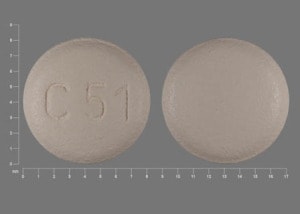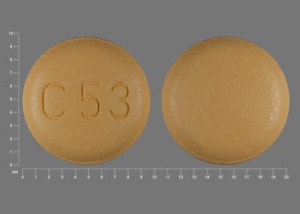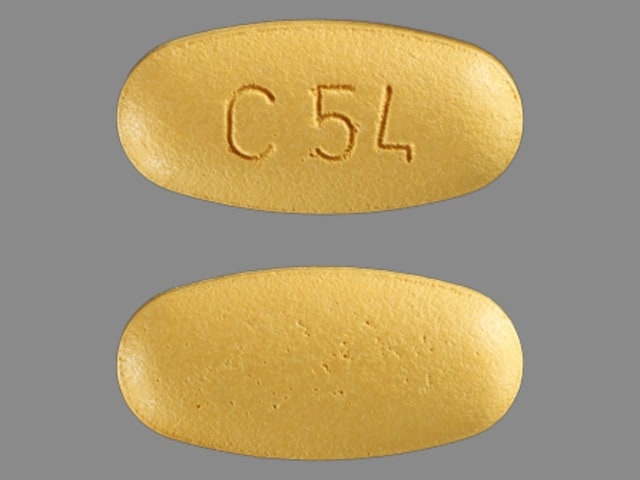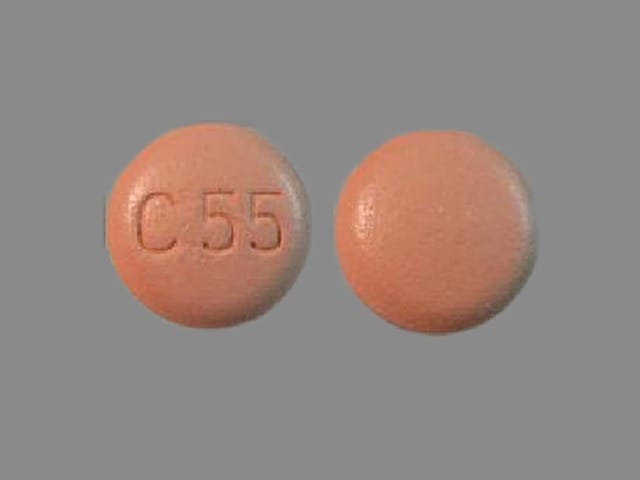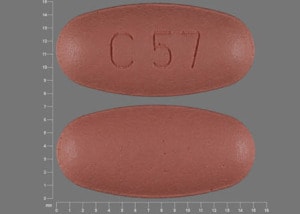What is Tribenzor?
Tribenzor is a prescription medicine used to lower blood pressure (hypertension). Medicines that lower blood pressure lower your chance of having a stroke or heart attack. Tribenzor is not for use as the first medicine to treat your high blood pressure.
Tribenzor contains 3 different prescription medications:
- amlodipine, a calcium channel blocker
- olmesartan medoxomil, an angiotensin receptor blocker, and
- hydrochlorothiazide, a diuretic (water pill)
It is not known if Tribenzor is safe and works in children.
What is high blood pressure (hypertension)?
Blood pressure is the force of blood in your blood vessels when your heart beats and when your heart rests. You have high blood pressure when the force is too much.
High blood pressure makes the heart work harder to pump blood through the body and causes damage to blood vessels. Tribenzor can help your blood vessels relax so your blood pressure is lower.
What is the most important information I should know about Tribenzor?
- Tribenzor can cause harm or death to an unborn baby.
- Talk to your doctor about other ways to lower your blood pressure if you plan to become pregnant.
- If you get pregnant while taking Tribenzor, tell your doctor right away.
Who should not take Tribenzor?
Do not take Tribenzor if you:
- have low or no urine output
- are allergic to other Sulfonamide type medicines. Ask your doctor if you are not sure.
- are taking aliskiren and have diabetes.
What should I tell my healthcare provider before taking Tribenzor?
Before taking Tribenzor, tell your doctor if you:
- are pregnant or plan to become pregnant. See “What is the most important information I should know about Tribenzor?”
- are breast feeding or plan to breast feed. One of the medicines in Tribenzor can pass into your breast milk and may harm your baby. You and your doctor should decide if you will take Tribenzor or breastfeed. You should not do both.
- are allergic to any of the ingredients in Tribenzor. See the end of the leaflet for a list of the ingredients in Tribenzor.
- have liver problems
- have heart problems
- have kidney problems
- have lupus
- are vomiting or have a lot of diarrhea
- have any other medical conditions
Tell your doctor about all the medicines you take, including prescription and non-prescription medicines, vitamins, and herbal supplements. Some of your other medicines and Tribenzor could affect each other, causing serious side effects.
Especially tell your doctor if you are taking:
- water pills (diuretics)
- other medicines for high blood pressure or a heart problem
- potassium supplements or using salt substitute containing potassium
- diabetes medicine including insulin
- narcotic pain medicine
- sleeping pills and anti-seizure medicines called barbiturates
- lithium, a medicine used to treat certain kinds of depression
- medicines used to treat pain or arthritis such as aspirin or non-steroidal anti-inflammatory drugs (NSAIDs)
- steroids
- cholesterol lowering medicines
- tacrolimus and cyclosporine (medicines used to alter the way your immune system works)
Know the medicines you take. Keep a list of your medicines and show it to your doctor or pharmacist when you get a new medicine.
How should I take Tribenzor?
- Take Tribenzor exactly as prescribed by your doctor. Your doctor may change your dose if needed.
- Take Tribenzor one time a day.
- Tribenzor can be taken with or without food.
- If you miss a dose, take it as soon as you remember. If it is close to your next dose, do not take the missed dose. Just take the next dose at your regular time.
- If you take too much Tribenzor, call your doctor or Poison Control Center, or go to the nearest hospital emergency room.
What should I avoid while taking Tribenzor?
Drinking alcohol. Drinking alcohol during treatment with Tribenzor can cause you to have low blood pressure. See “What are the possible side effects of Tribenzor?”
What are the possible side effects of Tribenzor?
Tribenzor may cause serious side effects, including:
- Harm to an unborn baby causing injury or death. See “What is the most important information I should know about Tribenzor?”
- Low Blood Pressure (hypotension). Low blood pressure may cause you to feel faint or dizzy. Lie down, if you feel faint or dizzy. Call your doctor right away.
- Kidney problems. Kidney problems may get worse in people that already have kidney disease. Blood tests for kidney function may be done while you are taking Tribenzor and the doctor may need to lower your dose of Tribenzor. Call your doctor if you get swelling in your feet, ankles, or hands, or unexplained weight gain. If you have heart failure, your doctor should check your kidney function before prescribing Tribenzor.
- Worsening chest pain or heart attack. Get medical help right away if you have chest pain that gets worse, or that does not go away, during treatment with Tribenzor.
- Allergic reactions. Hydrochlorothiazide, one of the medicines in Tribenzor can cause allergic reactions.
- Changes in body salts (such as sodium and potassium), and body fluids. Tell your doctor if you have any of these signs or symptoms during treatment with Tribenzor:
- Dry mouth
- thirst
- weakness
- tiredness or sleepiness
- restlessness
- confusion
- seizures
- muscle pains or cramps
- muscle tiredness
- dizziness or fainting
- low or no urine output
- fast heartbeat
- nausea and vomiting
- Eye problems. One of the medicines in Tribenzor can cause eye problems that may lead to vision loss. Symptoms of eye problems can happen within hours to weeks of starting Tribenzor. Tell your doctor right away if you have:
- decrease in vision
- eye pain
- Severe diarrhea and weight loss. Severe, chronic diarrhea with considerable weight loss may develop months to years after starting Tribenzor. Tell your doctor if you are experiencing these symptoms.
The most common side effects of Tribenzor used to treat people with high blood pressure include:
- dizziness
- swelling (edema) of the ankles, feet, and hands
- headache
- tiredness
- stuffy or runny nose and sore throat
- muscle twitching (spasms)
- nausea
- upper respiratory tract infection
- diarrhea
- urinary tract infection
- swelling (edema) of the joints
Tell your doctor if you have any side effect that bothers you or that does not go away.
These are not all of the possible the side effects of Tribenzor. For more information, ask your doctor or pharmacist.
Call your doctor for medical advice about side effects. You may report side effect to the FDA at 1-800-FDA1088.
Tribenzor Images
General information about the safe and effective use of Tribenzor
Medicines are sometimes prescribed for purposes other than those listed in a patient information leaflet. Do not use Tribenzor for a condition for which it was not prescribed. Do not give Tribenzor to other people, even if they have the same symptoms you have. It may harm them.
This leaflet summarizes the most important information about Tribenzor. If you would like more information, talk with your doctor. You can ask your doctor or pharmacist for information about Tribenzor that is written for health professionals. For more information go to www.Tribenzor.com or call 1-877-437-7763.
How should I store Tribenzor?
- Store Tribenzor at 59ºF to 86ºF (15ºC and 30ºC).
- Keep Tribenzor and all medicines out of the reach of children.
What are the ingredients in Tribenzor?
Active ingredients: olmesartan medoxomil, amlodipine, and hydrochlorothiazide
Inactive ingredients: silicified microcrystalline cellulose, pregelatinized starch, croscarmellose sodium, and magnesium stearate. The color coating contains polyvinyl alcohol, macrogol/polyethylene glycol 3350, titanium dioxide, talc, iron oxide yellow (20 /5 /12.5 mg, 40 /5 /12.5 mg, 40 /5 /25 mg, 40 /10 /12.5 mg, and 40 /10 /25 mg tablets), iron oxide red (20 /5 /12.5 mg, 40 /10 /12.5 mg, and 40 /10 /25 mg tablets), and iron oxide black (20 /5 /12.5 mg tablets).

